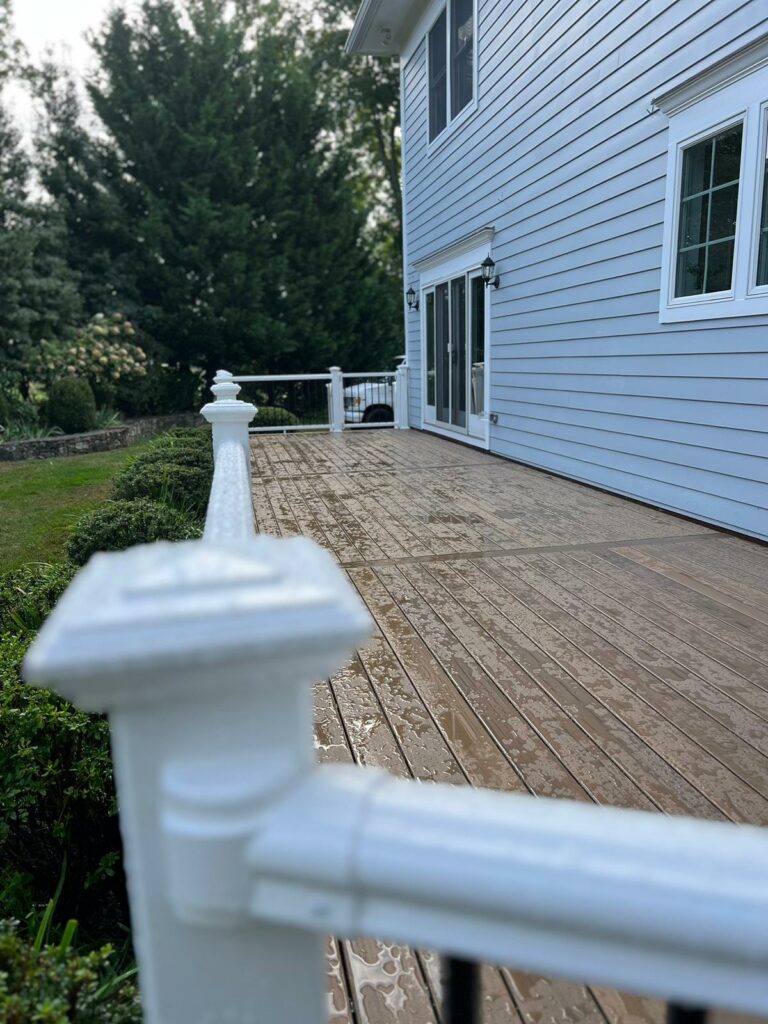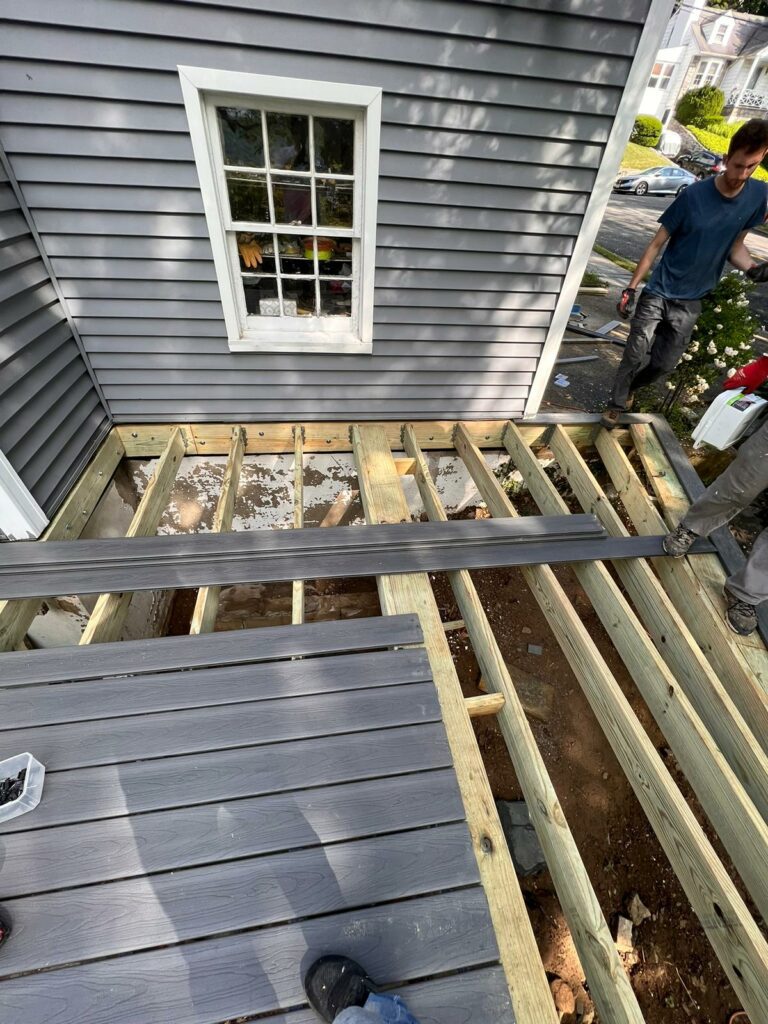Vinyl decks have become an increasingly popular choice for homeowners seeking a low-maintenance and durable outdoor space. However, the question of how long these decks actually last remains a matter of curiosity for many. While there is no one-size-fits-all answer, as the lifespan of a vinyl deck depends on several factors, such as quality, installation, and maintenance, this discussion aims to shed light on the topic. By exploring the factors affecting vinyl deck lifespan, providing insights into average longevity, and offering maintenance tips to extend their lifespan, we will uncover the secrets behind the durability of vinyl decks. So, let’s embark on this journey to understand the longevity of vinyl decks and discover if they truly stand the test of time. The lifespan of vinyl decks is influenced by various factors that impact their durability and longevity. One of the factors affecting vinyl deck lifespan is the color of the decking material. Darker colors tend to absorb more heat from the sun, which can cause the vinyl to expand and contract more frequently. This expansion and contraction can lead to warping and cracking over time, reducing the lifespan of the deck. On the other hand, lighter colors reflect more heat and are less likely to experience this issue. Another factor that affects the lifespan of vinyl decks is the quality of the material itself. High-quality vinyl decking is made from durable materials that are resistant to fading, staining, and mold growth. This ensures that the deck will maintain its appearance and performance for a longer period of time. In contrast, lower-quality vinyl decking may deteriorate more quickly, requiring frequent repairs or replacement. Compared to traditional wood decking, vinyl decking offers several benefits that contribute to its longer lifespan. Vinyl decking is resistant to rot, insect infestation, and moisture damage, which are common issues faced by wood decks. Additionally, vinyl decking requires minimal maintenance, eliminating the need for regular staining, sealing, or painting that is necessary for wood decks. These factors contribute to the overall longevity of vinyl decks. One important aspect to consider when evaluating vinyl decks is their average lifespan, which can be influenced by a variety of factors. Vinyl decks are known for their durability and longevity, making them a popular choice among homeowners. On average, a well-maintained vinyl deck can last between 20 to 30 years. However, this lifespan can vary depending on several factors. Cost comparison: Vinyl decks are generally more expensive upfront compared to wood decks. However, when considering the long-term costs, vinyl decks require minimal maintenance, saving homeowners money on repairs and replacements. Wood decks, on the other hand, may require regular staining, sealing, and repairs, which can add up over time. Environmental impact: Vinyl decks have a lower environmental impact compared to both wood and composite decks. Vinyl is a synthetic material that does not require the cutting down of trees, reducing deforestation. Additionally, vinyl decks do not release harmful chemicals into the environment, unlike composite decks which may contain toxic substances. To ensure the longevity of your vinyl deck, implementing proper maintenance techniques is crucial. Vinyl deck maintenance is essential in preserving the aesthetics and structural integrity of your deck. By following best practices for vinyl decks, you can extend their lifespan and minimize the need for repairs or replacements. Regular cleaning is a fundamental aspect of vinyl deck maintenance. Remove any debris, dirt, or leaves from the surface using a broom or a leaf blower. For more stubborn stains, use a mild detergent mixed with water and scrub gently. Avoid using abrasive cleaners or tools that may damage the vinyl surface. Inspect your vinyl deck regularly for any signs of damage, such as cracks, warping, or loose boards. Address these issues promptly to prevent further deterioration. Repair any damaged areas by replacing the affected boards or seeking professional assistance when necessary. Protecting your vinyl deck from UV rays is another crucial maintenance practice. Apply a UV protectant or sealant specifically designed for vinyl surfaces to prevent fading and discoloration caused by prolonged sun exposure. Lastly, avoid placing heavy furniture or objects directly on your vinyl deck to prevent indentations or permanent marks. Use furniture pads or rugs to distribute the weight evenly and protect the surface. If you notice significant structural damage, extensive discoloration, or persistent issues with your vinyl deck, it may be time to consider replacing it. While vinyl decks are known for their durability and low maintenance, they are not invincible and can show signs of wear and tear over time. One of the most obvious signs of vinyl deck damage is when there are visible cracks, splits, or warping in the boards. These issues can compromise the stability and safety of the deck, making it necessary to replace it. Additionally, if you notice extensive discoloration or fading in the vinyl material, it could indicate that the deck is nearing the end of its lifespan. Other signs to watch out for include loose or missing fasteners, excessive mold or mildew growth, and persistent issues with drainage or water pooling. If your vinyl deck is exhibiting any of these signs, it is recommended to consult with a professional contractor to assess the extent of the damage and explore decking material alternatives for replacement. Vinyl decks can be compared to other decking materials in terms of their durability, maintenance requirements, and overall performance. Vinyl decks are highly resistant to moisture, rot, and insect damage, making them a reliable choice for long-term use. In a vinyl decking vs wood comparison, vinyl often stands out for its low maintenance needs, as it doesn’t require staining, sealing, or frequent repairs like wood does. Additionally, vinyl decking offers a wide variety of colors and finishes, ensuring homeowners can achieve their desired aesthetic without compromising on durability. When it comes to durability, vinyl decks have a distinct advantage over traditional wood decks. Vinyl is a highly durable material that is resistant to rot, decay, and insect infestation. It can withstand harsh weather conditions, including extreme temperatures and heavy rainfall, without warping or splitting. In comparison, wood decks require regular maintenance, such as staining and sealing, to protect them from moisture and UV damage. In terms of maintenance, vinyl decks are also low-maintenance compared to other decking materials. Unlike wood, vinyl does not require regular staining, sealing, or painting. It can be easily cleaned with a mild detergent and water, making it an attractive option for homeowners who do not want to spend a lot of time and effort on deck maintenance. When it comes to overall performance, vinyl decks offer a combination of durability, low maintenance, and aesthetic appeal. They are available in a variety of colors and textures, allowing homeowners to customize their outdoor spaces. While the upfront cost of vinyl decks may be higher than wood decks, the long-term cost analysis shows that vinyl decks require less maintenance and last longer, making them a cost-effective choice in the long run. Additionally, vinyl deck benefits and drawbacks should be considered before making a final decision. While vinyl decks resist rot, decay, and insect damage, they can be prone to fading or warping under extreme weather conditions if not properly installed. Despite these potential issues, the overall ease of cleaning and longevity often outweigh the drawbacks for many homeowners. Choosing vinyl decking over wood can significantly extend the lifespan of decks in Westchester NY. Resistant to rot, insects, and weather damage, vinyl requires less maintenance and holds up well over time. When debating vinyl vs wood, the durability and longevity of vinyl often make it the superior choice for homeowners. Additionally, vinyl decking offers a wide range of colors and textures, allowing homeowners to achieve the aesthetic they desire without sacrificing functionality. As the best low maintenance decking option, it eliminates the need for periodic staining, sealing, or sanding that wood decks typically require. This makes vinyl an ideal solution for those seeking a beautiful, hassle-free outdoor space in Westchester NY. Vinyl decks can be painted or stained to change their color, providing homeowners with the flexibility to customize their outdoor space. This maintenance practice not only enhances the deck’s appearance but also offers protection against UV rays and other environmental factors. When comparing the cost of vinyl decks to other decking materials, it is important to consider the long-term maintenance requirements. Vinyl decks often require less maintenance, resulting in potential cost savings over time. Vinyl decks have several advantages over other decking materials, including their resistance to mold and mildew. To prevent the growth of mold and mildew on vinyl decks, regular cleaning and proper ventilation are recommended. Vinyl decks have a remarkable ability to withstand extreme weather conditions, including hot and humid climates and freezing temperatures. Their durability and performance in such environments make them a reliable choice for outdoor decking projects. The vinyl deck installation process allows for the possibility of installing vinyl decks over an existing deck structure, providing numerous benefits such as durability, low maintenance, and resistance to moisture, rot, and pests. This option not only saves time and money by reducing the need to dismantle the old deck but also minimizes construction waste, making it an environmentally friendly choice. For those wondering what is vinyl decking, it is a synthetic material made from PVC that is designed to mimic the look of traditional wood while offering superior performance and longevity. Its versatility and range of color options make it a popular choice for homeowners looking to enhance the aesthetic and functionality of their outdoor spaces. In conclusion, the lifespan of vinyl decks can vary depending on several factors such as quality, maintenance, and exposure to harsh weather conditions. On average, a well-maintained vinyl deck can last anywhere from 20 to 30 years. Regular cleaning, sealing, and avoiding heavy furniture or sharp objects can help extend the lifespan of a vinyl deck. However, if you notice signs of deterioration, such as cracking, warping, or discoloration, it may be time to consider replacing your vinyl deck. Compared to other decking materials, vinyl decks offer durability, low maintenance, and a wide range of design options.Factors Affecting Vinyl Deck Lifespan

Average Lifespan of Vinyl Decks
Maintenance Tips to Extend Vinyl Deck Lifespan
Signs Your Vinyl Deck Needs Replacement

Comparing Vinyl Decks to Other Decking Materials
Does Choosing Vinyl Decking Over Wood Extend the Lifespan of Decks in Westchester NY?
Frequently Asked Questions
Can Vinyl Decks Be Painted or Stained to Change the Color?
What Is the Cost Difference Between Vinyl Decks and Other Decking Materials?
Are Vinyl Decks Resistant to Mold and Mildew?
Can Vinyl Decks Withstand Extreme Weather Conditions?
Can Vinyl Decks Be Installed Over an Existing Deck Structure?
Conclusion